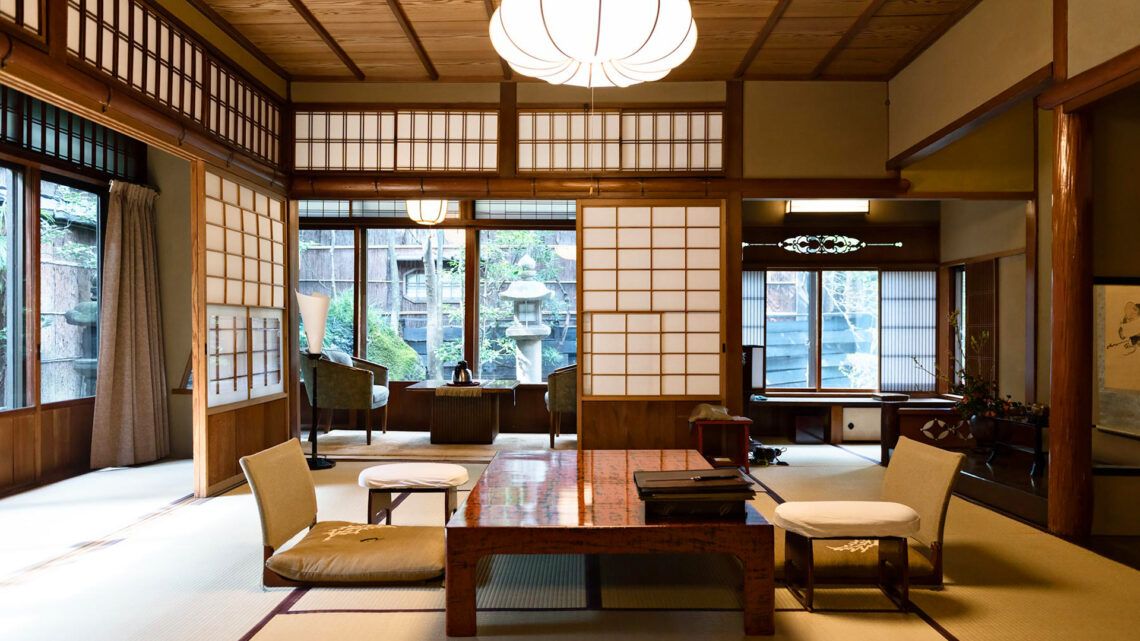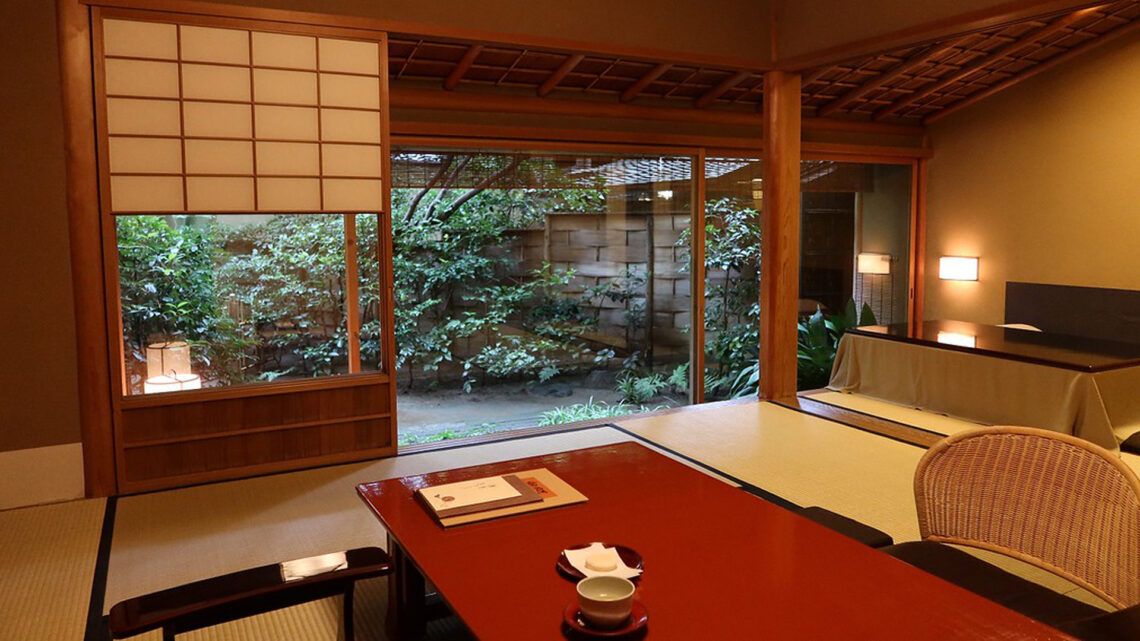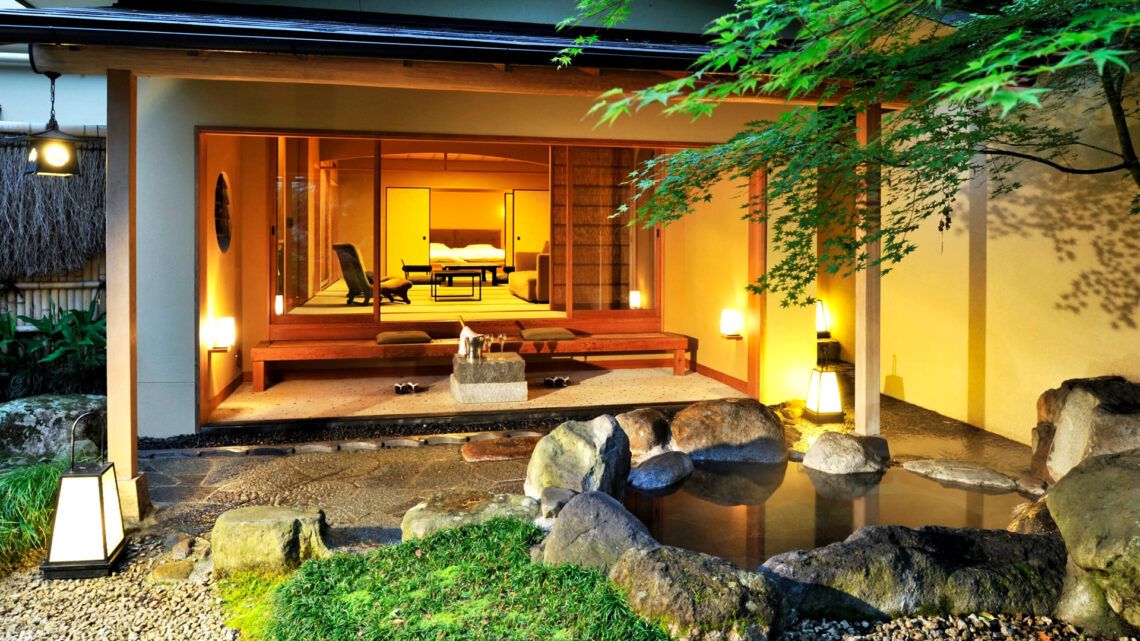
Welcome to Kinosaki Onsen – the city of seven hot springs, an enchanting town in Hyogo Prefecture, Japan. This picturesque town is famous for its seven public hot springs, renowned not only for their healing properties but also for their traditional atmosphere and rich surrounding history. Let’s delve into the fascinating world of Kinosaki Onsen and discover why this town is a must-visit for every traveler in Japan.
Kinosaki Onsen proudly hosts no less than seven public baths, each boasting its own unique thermal spring and atmosphere. Each onsen has its own charm, and strolling through the narrow streets of the town leads visitors to these diverse oases of relaxation.
Situated away from bustling urban scenes, Kinosaki Onsen transports visitors to a world of peace and serenity. The picturesque town, surrounded by lush forests and clear rivers, exudes an atmosphere that captivates every guest. The traditional wooden houses lining the narrow alleys lend a timeless elegance to the place.
Undoubtedly, a highlight of Kinosaki Onsen is its seven public baths, also known as “sotoyu,” seamlessly blending into the surroundings. Each of these baths is unique, offering not only healing warm water but also a visual delight. The architecture reflects the history and tradition of the region, while the water gushes from natural springs, transporting guests into a world of relaxation.
In Kinosaki, the preferred mode of transportation will be on foot. The town is renowned for its walks, allowing visitors to stroll from one bath to the next. Lined with cherry blossom trees in full bloom during spring, the paths provide a picturesque backdrop for a leisurely walk.
The journey through Kinosaki Onsen would be incomplete without indulging in the culinary delights the area has to offer. Local specialties, including fresh fish and seafood, are served in numerous restaurants. The combination of exquisite flavors and traditional preparation makes every bite a feast for the senses.
Kinosaki Onsen is more than just a bathing destination. It is a journey through time, an oasis of tranquility, and an immersion into the rich culture of Japan. The combination of traditional baths, hospitable ryokans, and the peaceful atmosphere makes this place a must-visit for anyone seeking relaxation and inspiration.
The History of the Kinosaki Onsen
Kinosaki Onsen, a picturesque town in the Hyogo Prefecture of Japan, is not only known for its scenic landscapes but also for its rich history and traditional hot springs that have been attracting visitors from around the world for centuries.
The history of Kinosaki Onsen dates back to the Edo period in the 8th century. It is said that a Buddhist monk named Dochi Shonin discovered the healing power of the hot springs, transforming the area into a place of relaxation and spiritual healing.
During the Edo era, Kinosaki Onsen reached its zenith as a popular retreat for nobles and samurai. The town served as a haven, easing the strenuous journeys along trade routes.
Entering the Meiji era and witnessing societal changes in Japan, Kinosaki Onsen also underwent transformations. The baths were modernized to cater to the growing number of visitors, and the town slowly opened its doors to foreign guests.
The rich history of Kinosaki Onsen is reflected not only in its thermal springs but also in the cultural diversity of the region. Traditional events like the “Dan-Dan Festival,” where residents clad in colorful yukatas parade through the streets, allow visitors to deeply immerse themselves in the vibrant culture.
A distinctive feature of Kinosaki Onsen is the seven public baths, also known as “sotoyu,” scattered throughout the town. Each of these baths has its own unique thermal water, providing visitors with the opportunity to relax in different atmospheres.
The narrow streets of Kinosaki Onsen are like a living history book. Traditional ryokans, emphasizing hospitality, shape the cityscape. A stroll through these alleys is not only a journey into the past but also an opportunity to experience the warm hospitality of the locals.
Kinosaki Onsen also has a close connection to literature. Renowned writers, including Nobel laureate Yasunari Kawabata, found inspiration in the tranquil waters of the town. Their works contributed to establishing Kinosaki Onsen as a cultural and literary treasure of Japan.
The surrounding nature adds to the timeless beauty of Kinosaki Onsen. Surrounded by mountains and forests, the town provides a breathtaking backdrop in every season. The cherry blossoms in spring and the autumn foliage enhance the idyllic atmosphere.
During the 20th century, Kinosaki Onsen faced the challenges of modernization. However, despite advancing technology and growing tourism, the town retained its traditional charm and authenticity.
Today, Kinosaki Onsen is not only a place of rejuvenation but also a living museum of Japanese history. The streets, lined with historic ryokans and traditional tea houses, tell stories of bygone eras.
The seven hot springs in Kinosaki
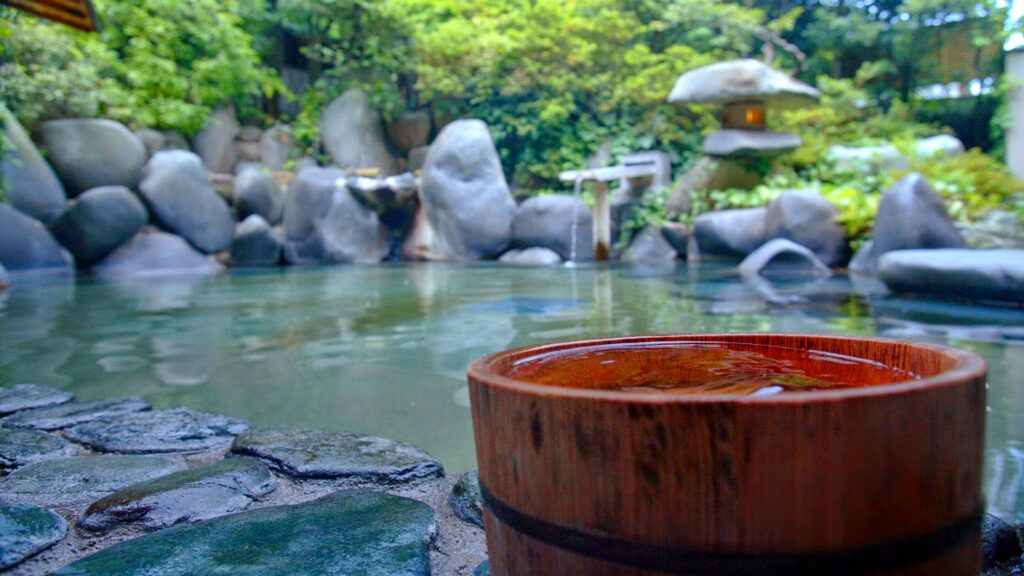
1. Ichi-no-yu
Let’s start our journey with Ichi-no-yu, the oldest onsen in Kinosaki. Founded over 1,300 years ago, this bath not only offers visitors the opportunity to soak in healing waters but also to immerse themselves in history.
The picturesque town of Kinosaki in Hyogo Prefecture, Japan, is renowned not only for its seven public onsens (hot springs) but also for its deep roots in traditional Japanese culture. One onsen that stands out is “Ichi-no-yu,” a place where history, nature, and relaxation fascinatingly converge.
Ichi-no-yu, literally translated as “Spring Number One,” is more than just a bathing place; it is an oasis of tranquility and serenity. Upon entering the building, visitors are enveloped in a warm atmosphere infused with a touch of centuries-old traditions. The architecture itself narrates stories of bygone eras, while modern amenities create a harmonious link between yesterday and today.
The history of Ichi-no-yu stretches far back and is closely tied to the development of Kinosaki. Originally used as a private spring, over time, it evolved into a community space as locals recognized the treasure hidden in its depths. Today, Ichi-no-yu proudly stands as a public bath, offering visitors insights into the rich past of this spring.
A visit to Ichi-no-yu is not just a dip in hot springs; it’s a journey through traditional Japanese rituals. Before immersing oneself in the soothing waters, it is customary to cleanse thoroughly. Wash stations, equipped with wooden buckets and soap dishes, allow guests to follow ancient rituals before enjoying the warm water.
2. Ni-no-yu
Ni-no-yu, the second bath, is known for its clear, mineral-rich water sources. The scenic garden surrounding the bath enhances the sense of peace and tranquility that guests experience during their visit. This traditional Japanese bath not only promises a rejuvenating break but also a unique cultural experience. Join us in exploring the fascinating world of Ni-no-yu in Kinosaki.
Ni-no-yu has a rich history closely linked to the development of Kinosaki. Originally used centuries ago by monks as a place of purification and spiritual renewal, it eventually opened to the public and became a significant social hub in the region.
A glance at the architecture of Ni-no-yu reveals the captivating fusion of tradition and modernity. The exterior structure follows the style of a classic Japanese onsen, while the interior boasts contemporary design. Warm wooden tones and subtle lighting create an inviting atmosphere, imparting a sense of security to the guests.
The heart of Ni-no-yu is, of course, the thermal water rising from the depths of the earth. Rich in minerals and health-promoting elements, the water of Ni-no-yu not only promises muscle relaxation but also healing properties for the skin. A soak in this spring water is akin to a journey to the origins of natural healing.
Ni-no-yu in Kinosaki offers not only simple bathing experiences but also traditional rituals and ceremonies providing guests with a deeper insight into Japanese culture. From tea ceremonies to meditation sessions, Ni-no-yu offers a variety of activities that bring body and mind into harmony.
A visit to Ni-no-yu would be incomplete without exploring the culinary offerings. The in-house restaurant serves a selection of exquisite dishes prepared from fresh, locally sourced ingredients. Meals are crafted with great care and attention to detail, ensuring guests an unforgettable culinary experience.
For those looking to fully enjoy Ni-no-yu, comfortable accommodation options are available. The accommodations are designed in the traditional Japanese style, providing guests with an authentic glimpse into local life. The service is top-notch, and the rooms offer breathtaking views of the surrounding nature.
Apart from the bathing experiences, Kinosaki offers a variety of activities and attractions worth exploring. From the scenic cherry blossom path to historical temples, there is much to discover in the vicinity of Kinosaki. The friendly staff of Ni-no-yu is happy to assist guests with recommendations and information.
Ni-no-yu in Kinosaki is not just an onsen; it is a journey into the soul of Japan. The combination of tradition and modernity, the healing properties of the water, the culinary delights, and the authentic accommodations make it a holistic experience. A visit to Ni-no-yu not only promises relaxation but also a profound cultural experience that lingers in memory. Immerse yourself and let the magic of this unique place enchant you.
3. San-no-yu
San-no-yu, the third onsen, offers a breathtaking view of the Maruyama River. The connection to nature is particularly palpable here as you enjoy the soothing effects of the hot springs. In the idyllic surroundings of Kinosaki, San-no-yu is a true gem that captivates visitors with its authentic atmosphere and healing thermal springs.
San-no-yu is not just a bathhouse; it is a historical treasure. The roots of this onsen extend deep into Japan’s history, and the place is infused with the tradition and culture that make the country so unique. Lovingly maintained over the years, the bathhouse preserves its authenticity while simultaneously providing the comfort and amenities of the modern world.
The true heart of San-no-yu is undoubtedly its hot springs. These healthy and revitalizing waters are renowned for their healing properties and are appreciated by locals and travelers alike. The thermal water of San-no-yu contains minerals that not only pamper the skin but also relieve stress and relax the muscles. A soak in these springs is a veritable journey of the senses that refreshes both body and mind.
San-no-yu masterfully combines traditional Japanese architecture with modern comfort. The wooden structures and tatami mats create a relaxing atmosphere, while amenities like Wi-Fi and modern bathing facilities make the stay enjoyable. The blend of old and new makes San-no-yu a unique place that honors the region’s history without sacrificing modern luxury.
San-no-yu is especially enchanting during the cherry blossom season. The surroundings become a picturesque image as delicate blooms transform the landscape into a pink sea of flowers. During this time, the bathhouse offers special arrangements and events that make the visit an unforgettable experience.
A stay at San-no-yu would be incomplete without indulging in the culinary delights offered here. The in-house restaurant serves traditional Japanese dishes prepared with fresh, local ingredients. From sushi to delicious ramen dishes, the menu offers a wide range of flavors that seduce the palate.
Amidst the seven public bathhouses of Kinosaki, San-no-yu is undoubtedly a highlight. The combination of history, tradition, modern comfort, and natural beauty makes this place a jewel to be discovered. Immerse yourself in the healing waters, experience the fascinating culture, and let yourself be enchanted by the serenity of San-no-yu. A trip to Kinosaki is not complete without a visit to this unique onsen—a place of harmony and relaxation.
4. Yon-no-yu
Yon-no-yu, the fourth bath, entices with a more modern design and amenities. Here, visitors can experience the perfect blend of tradition and comfort.
The origins of Yon-no-yu delve deep into the history of Kinosaki. The source supplying water for this onsen has been known for generations and has been carefully maintained to ensure the purest quality. The name “Yon-no-yu” translates to “Spring Number Four,” reflecting that it is the fourth spring discovered in the Kinosaki onsen area.
Yon-no-yu is distinguished not only by its healing waters but also by its impressive architecture and traditional design. The building is a fusion of traditional Japanese aesthetics and modern comfort. Wood paneling and tatami mats lend a warm atmosphere to the space, while large windows open up views of the surrounding nature.
A day at Yon-no-yu is not just a visit to an onsen; it is a journey into the realm of relaxation and self-care. The day often begins by exploring the various bathing areas. Each area in Yon-no-yu offers a unique composition of minerals that contribute to stress relief and skin revitalization.
Guests also have the opportunity to enjoy traditional Japanese teas and refreshing juices, carefully prepared to invigorate the senses. For those seeking a more comprehensive experience, Yon-no-yu also offers wellness services such as traditional massages and facial treatments.
What makes Yon-no-yu particularly appealing is its ability to capture the beauty of the different seasons. In spring, the surrounding cherry trees bloom, transforming the outdoor area of the onsen into a sea of delicate blossoms. In summer, outdoor bathing allows guests to enjoy the warm breezes. Autumn brings an explosion of colors as the tree leaves change, and winter envelops the onsen in a tranquil snowscape.
Yon-no-yu is easily accessible and is just a short walk from the main Kinosaki train station. Well-marked paths guide visitors through the charming streets of the town, passing shops offering local crafts and delicacies.
5. Go-no-yu
Go-no-yu, the fifth hot spring, is known for its cherry blossoms that transform the surroundings into a colorful spectacle in spring. Visiting during this season is a truly magical experience.
Kinosaki is home to one of the gems among hot springs – the famous “Go-no-yu.” This healing bath not only provides a retreat for weary travelers but also offers insight into the fascinating healing powers of nature.
The history of Go-no-yu dates back significantly and is closely tied to the development of Kinosaki. The source of water for this hot spring has been cherished and maintained for generations. The name “Go-no-yu” reflects the fact that it is the fifth discovered spring in the region.
Go-no-yu presents itself as a harmonious place that skillfully blends traditional architecture and modern amenities. The building is modest from the outside but exudes a warm atmosphere inside. Traditional wooden finishes and Japanese gardens create an inviting environment for relaxation.
A visit to Go-no-yu is more than just bathing in thermal springs. It is an experience that invigorates the senses and soothes the mind. The thermal springs here are rich in minerals known for their healing properties. The various pools in Go-no-yu offer a variety of temperatures and mineral compositions to cater to the guests’ needs.
Staying at Go-no-yu not only provides the pleasure of bathing but also the opportunity to enjoy wellness services. From traditional massages to facial treatments, experienced therapists ensure that guests experience the full range of relaxation.
Go-no-yu offers a visual symphony throughout the year, changing with the seasons. In spring, the surrounding nature blossoms, while summer provides the opportunity for outdoor bathing. In autumn, the fall colors enchant the surroundings, and winter blankets the onsen in a peaceful layer of snow.
6. Roku-no-yu
Roku-no-yu, the sixth hot spring, not only offers hot springs but also a selection of local specialties in the surrounding shops. A perfect place to indulge both the body and the palate. Kinosaki, a town imbued with historical charm and surrounded by picturesque nature, is home to one of the outstanding hot springs, “Roku-no-yu.” These healing thermal springs are not just a place of relaxation but also a journey into the deep roots of serenity.
Roku-no-yu has a fascinating history that spans many generations. The source feeding this hot spring is carefully guarded and is known for its pure and healing properties. The name “Roku-no-yu” translates to “Spring Number Six,” indicating that it is the sixth discovered spring in the Kinosaki Onsen area.
The architecture of Roku-no-yu is a harmonious fusion of traditional Japanese design and modern comfort. Surrounded by lush greenery and overlooking the natural surroundings, this onsen provides an atmosphere of tranquility and renewal. Wooden elements and traditional accents connect to the rich culture of the region.
Roku-no-yu is not just a simple bath in thermal springs; it is an experience for the body and mind. The minerals in the springs have proven beneficial effects on the skin and promote overall well-being. The various pools in Roku-no-yu offer a variety of water temperatures and mineral compositions to meet the guests’ needs.
A visit to Roku-no-yu goes beyond bathing. The onsen also offers a range of wellness services, including traditional massages and facial treatments. Experienced therapists ensure that guests experience complete relaxation and renewal.
Roku-no-yu is a place that changes with the seasons. In spring, the surrounding cherry trees bloom, immersing the onsen in a sea of delicate blossoms. Summer opens up the opportunity to bathe outdoors and enjoy the warm sunshine. In autumn, the surroundings transform into a colorful spectacle, while winter envelops Roku-no-yu in a serene snowy landscape.
7. Shichi-no-yu
Our journey concludes with Shichi-no-yu, the seventh and final onsen. This bath stands out for its spacious baths and relaxed atmosphere. It is the ideal place to reflect on the impressions of your journey to Kinosaki Onsen. This healing bath is not only a place of relaxation but also a window into the rich tradition and history of Kinosaki.
The history of Shichi-no-yu extends deep into Kinosaki’s past. The name “Shichi-no-yu” indicates that this spring is the seventh discovered thermal spring in the area. The spring itself is a precious heritage, cultivated for generations and known for its purifying properties.
Shichi-no-yu impresses not only with its healing waters but also with its traditional architecture. The building pays homage to Japanese craftsmanship, with its wooden paneling, sliding doors, and an inner courtyard forming a tranquil oasis. The atmosphere is permeated with serenity, a place where time seems to stand still.
The main event at Shichi-no-yu is, of course, bathing in the thermal springs. The springs of this onsen are rich in minerals, offering a variety of health benefits. Various pools with different temperatures allow guests to enjoy a customized experience, whether it’s a soothing warmth or a refreshing bath.
Shichi-no-yu is not just a place of physical well-being but also a stage for traditional rituals and culture. Here, one can often encounter locals dressed in traditional yukatas, enjoying traditional green tea in the tea lounge. It’s an opportunity to delve deeper into the local way of life.
The beauty of Shichi-no-yu changes with the seasons. In spring, cherry blossoms bloom, turning the outdoor area into a pink dream. In summer, guests can bathe outdoors and enjoy warm evenings. Autumn brings an explosion of colors as the tree leaves change, and winter blankets the onsen in a peaceful layer of snow.
Getting to Shichi-no-yu is easy. From Kinosaki’s main station, a pleasant stroll through the picturesque streets of the city leads directly to the onsen. Along the way, visitors can explore local craft shops and sample local delicacies.
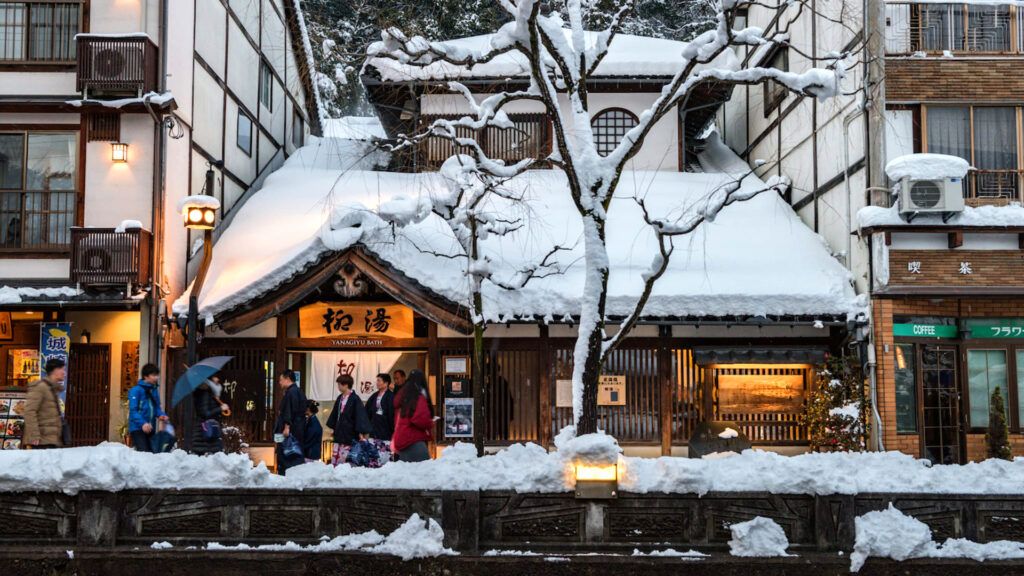
Cultural Experiences and Culinary Delights
Kinosaki, a picturesque town in the Hyogo region of Japan, is renowned not only for its traditional onsens but also for its rich culture and delectable cuisine. Join us on a journey into a world brimming with captivating cultural experiences and gastronomic pleasures. In addition to the seven onsens, Kinosaki offers a variety of cultural activities and culinary delights. From traditional tea ceremonies to local delicacies, there is much to explore.
The town of Kinosaki tells a tale of bygone eras, characterized by historical buildings and cherished traditions. The Kinosaki River, winding through the town, not only reflects the scenic landscape but also symbolizes the timeless nature of this place. Strolling along the seven public onsens, for which Kinosaki is famous, visitors experience the simplicity and elegance of Japanese bathing culture.
Yet, Kinosaki is more than just a destination for wellness enthusiasts. The town also hosts a wealth of cultural treasures, starting with the seven public onsens, each offering a unique charm and style. Each onsen is dedicated to a different aspect of traditional Japanese bathing culture, making Kinosaki a paradise for lovers of authentic experiences.
For art enthusiasts, Kinosaki boasts a variety of galleries and museums showcasing the rich history and creativity of the region. The “Museum of Traditional Arts” is a must-visit for anyone seeking deep insights into the craftsmanship and artistic traditions of the area. From handmade ceramics to intricately crafted textiles, there is much to discover here.
The culinary scene in Kinosaki is equally impressive. The town takes pride in pampering connoisseurs with a variety of traditional and modern delicacies. Narrow streets are lined with small restaurants serving local specialties such as Tajima beef and fresh seafood. A definite highlight is the opportunity to sample a Kaiseki menu, an artistic sequence of dishes celebrating the diversity and sophistication of Japanese cuisine.
Another highlight of a visit to Kinosaki is the Hanamiyama Festival in spring, where cherry blossoms bloom in full splendor, enveloping the town in a pink sea of flowers. This festival is not only a visual spectacle but also a tribute to the beauty of nature and the transience of life.
In Kinosaki, cultural experiences and culinary delights merge into a unique sensory journey. Whether staying in one of the traditional ryokans, participating in an onsen, or exploring local flavors, this town will enchant your senses and create unforgettable memories. Immerse yourself in the fascinating world of Kinosaki and let its timeless beauty inspire you.
Tradition and Modernity in Kinosaki: A Stroll Through the Alleys
While the traditional elements shape the soul of Kinosaki, space is simultaneously created for modern developments. The alleys of Kinosaki not only offer historical sights but also contemporary art and entertainment.
The historical Yunosato Alley is a vibrant example of bridging the gap between past and present. Here, not only traditional teahouses line up but also modern galleries providing space for young emerging artists. This contrast creates a unique atmosphere where visitors can experience the artistic evolution of the city.
Another fascinating aspect of Kinosaki’s alleys is the diversity of street food. Local stalls offer not only classic Takoyaki and Okonomiyaki but also modern interpretations of traditional dishes. The combination of flavors and techniques from the past and present makes the culinary scene in Kinosaki a melting pot of gastronomic delights.
For those seeking a touch of nostalgia, the antique shops in Izushi Alley are a true gem. Here, one finds not only souvenirs but also traditional craftsmanship reflecting the history of the region. From handmade ceramics to elaborate kimonos, there is an abundance of mementos perfectly capturing the charm of Kinosaki.
A detour into the modern shopping streets of the city reveals that Kinosaki is not only culturally but also commercially vibrant. Boutiques with contemporary fashion and designer stores harmoniously mix with traditional craft shops. This blend of tradition and modernity makes shopping in Kinosaki an experience for those seeking unique finds.
Off the main streets, hidden gems like “Kafe Märchen,” a cozy cafe not only serving delicious coffee but also providing a platform for local artists, can be discovered. Here, one can linger in a relaxed atmosphere while admiring the works of budding talents.
Kinosaki proves that tradition and modernity need not be contradictory. The city has managed to preserve its rich history while simultaneously making room for innovation and contemporary expression. A journey through the alleys of Kinosaki is thus not only a journey through time but also a voyage through the creative evolution of a fascinating city.
My personal Conclusion
Kinosaki in Hyogo Prefecture, with its seven onsens, is not just a town of hot springs but also a place that touches the soul. The blend of historical charm, natural beauty, and warm hospitality makes this location a unique destination. Immerse yourself in the warmth of Kinosaki Onsen and experience the magic that this town has to offer.
For me, Kinosaki, a picturesque town, has revealed itself as a true gem of Japan. In this post, I’ve not only shared my personal experiences but also shed light on the cultural depth and hidden treasures that this jewel possesses.
My journey began with a scenic train ride through Japan’s breathtaking landscape. Kinosaki is renowned not only for its hot springs but also for its charming streets lined with historical ryokans and traditional shops. The relaxed atmosphere that envelops this place is palpable upon arrival.
The absolute highlight of Kinosaki is its seven public onsens stretching along the river. Each onsen has its own unique ambiance and special history. From the natural spectacle of cherry blossoms in spring to the magical atmosphere in winter when snow transforms the area into a white wonderland, these hot springs offer an unparalleled delight.
Of course, my conclusion wouldn’t be complete without exploring the culinary side of Kinosaki. The city is famous for its Tajima beef, the most tender Wagyu beef one can find in Japan. In local restaurants, I had the opportunity to savor the delicate flavors of the regional cuisine, ranging from Sukiyaki dishes to delicious seafood fresh from the Sea of Japan.
During my journey, I also had the chance to immerse myself in the diverse culture of Kinosaki. Traditional tea ceremonies, ikebana (flower arrangements), and the art of wearing a kimono were introduced to me in workshops. These experiences not only created unforgettable memories but also provided insights into Japanese culture.
Kinosaki deeply impressed me with its beauty, hospitality, and cultural diversity. It’s not just a place for hot springs but a window into the soul of Japan. The mix of tradition and modernity, the delectable cuisine, and the warm-hearted people make Kinosaki a place that one must absolutely experience.
In my next post, I will delve into another famous Japanese onsen. So, stay tuned if you want to learn more about the hidden treasures of Japan’s onsens!
Your Candahashi

